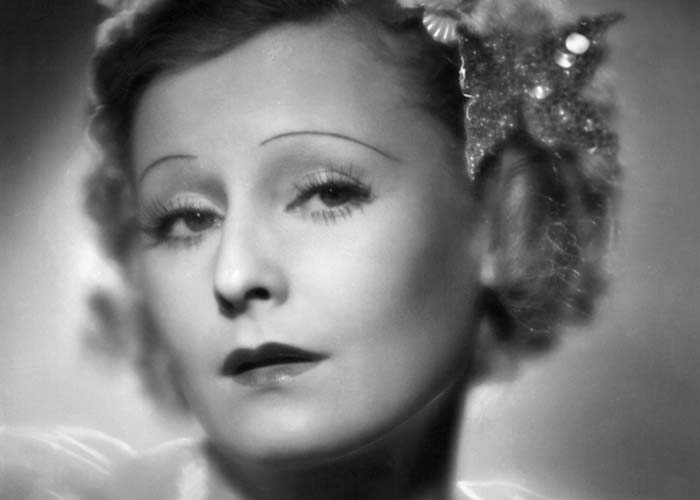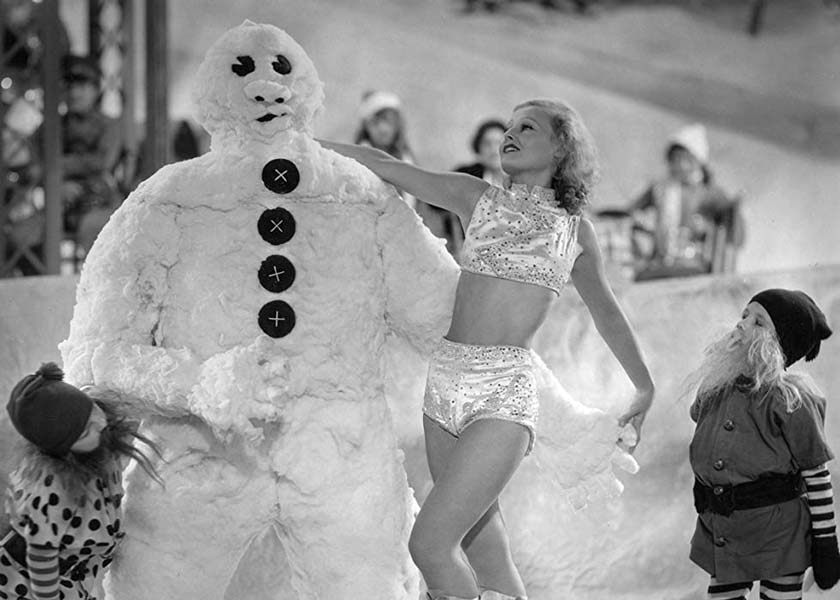Synopsis
Tony Malatini (Raymond) is disappointed that his puppet show attracts only small
audiences. His nearby competition, a music show featuring the beautiful Suzanne
(Harvey), has a large audience. Tony is enchanted by Suzanne and goes backstage to
ask her permission to make a puppet of her. Suzanne’s imperious manager, Adolpe
‘Baron” Herring (Banks), is angered to find Suzanne with Tony. The Baron controls
Suzanne who is frightened at the thought of being left on her own. The Baron is so
sure of his domination that he proclaims, I am Suzanne.
To ensure that the
Baron will not leave her, Suzanne promises to marry him.
Before a performance, Tony goes to Suzanne and asks her not to marry the Baron. Suzanne, confused and distracted, dances poorly and falls into the orchestra pit, severely injuring her leg. After her injury, Suzanne cannot dance. The Baron rejects her and begins training a new dancer. Tony encourages Suzanne to undertake a rigorous exercise regime that may repair her leg and allow her to dance again. While she is rehabilitating, Suzanne becomes a puppeteer. She and Tony devise a popular and successful show for their puppets.
Tony is in love with Suzanne but reluctant to tell her directly. After a
well-attended performance, the company holds a celebration during which Tony has
the puppets announce the marriage of the Tony
and Suzanne
puppets.
Suzanne, angered, announces that she is nobody’s puppet and proclaims
I am Suzanne!
Jealous of her uninihibited puppet, she gets a gun and shoots
it.
With her leg healed, Suzanne returns to the Baron. In her sleep, the confused and
anguished Suzanne dreams that the puppets have put her on trial and condemned her
for denouncing them. Awakening, she goes to Tony and apologizes for damaging the
puppet. Tony confesses his love. United, they perform a new show, in which the
puppet Suzanne
transforms into the dancer Suzanne.
Discussion
I Am Suzanne! revolves around two love triangles: one involving Tony
and Suzanne — a fairly conventional pair — and the controlling Baron;
and the other with Tony, Suzanne and Suzanne
the puppet. The puppets are
central to the plot. In addition to their use in a delightful play, they also
represent the psychological states of Tony and Suzanne. Tony is remote from real
people and emotionally attached to his puppets. Suzanne is a human puppet,
controlled by the Baron. Her puppet version is the vehicle through which she is
enabled to assert herself. Jealous and confused by Tony’s attachment to
Suzanne,
she attempts to remove this rival by shooting it. The 'wounded'
puppet, like Suzanne herself, needs to be made whole. Tony repairs it and in the
process realizes that puppets are just wooden objects, but he's in love with
Suzanne. Through her dream, Suzanne awakens to self-reliance and independence. The
ending makes explicit that Suzanne has freed herself from being manipulated by
anyone. Although this emphasis on the psychological states of the characters reads
a little heavy, on film it is all carried out in a bright and lively manner.
Leslie Banks, as the amiable scoundrel, gives a roguish performance, more comic opera than Svengali. Lilian Harvey, beautiful and charming, was an appealing and poised actress. Her singing was pleasant, but not particularly distinctive, and her dancing was more athletic than elegant. She dances with a male chorus and is thrown among them in a manner unfamiliar in Hollywood films of the time. Harvey suffered a broken ankle during this dance, and her scenes were postponed for a few weeks while she recovered. Gene Raymond’s mild and good-natured screen personality enabled him to meld compatibly with costars of varying temperaments, from the mild Dolores Del Río in Flying Down to Rio to the volatile Bette Davis in Ex-Wife. He pairs easily with Lilian Harvey, whose mental state in this film is mostly confused and discontented.
In 1933, Fox Film Corporation initiated a program of film production in Hollywood, Berlin and Paris. Hoping to increase international exhibition of its films, Fox signed three European stars: Henry Garat, from France, and Heather Angel and Lilian Harvey, both from England, although Harvey was best known for films made in Germany. The studio intended their new actors to make films in both Hollywood and Europe, but after each made an initial film in Hollywood the European projects never materialized.

In 1932, trilingual Lilian Harvey starred in the German, French and English versions of the outstanding German musical comedy Congress Dances. The English version was shown to good box office throughout the US, and based on her well-received performance Fox signed Harvey to a contract in June, 1932. Petit, pretty, and vivacious, Lilian Harvey seemed to have great potential for American stardom. She made three films for Fox, all released in 1933: My Lips Betray, My Weakness, and I Am Suzanne! The studio's attempts to present Harvey as a dainty coquette of delicate charm and gaiety — similar to her popular character in Congress Dances — was sabotaged by scripts that made Harvey’s characters more robust than dainty.
Harvey’s films did not generate strong financial returns, but her fan mail was good, and the studio had hopes that she would build an audience. In early 1934, Fox signed Harvey for three more films. She was preparing for a film, to be named Serenade, when she expressed displeasure with changes that were made to the script and requested release from her contract. Fox agreed, and by mutual agreement her new contract was terminated shortly after she signed it. Her abrupt departure from the studio may have been related to the coinciding departure from Fox of director Paul Martin, who had directed Harvey in Europe and had been working with her on the Serenade script. Harvey made one more American film, Let’s Live Tonight (1935), with Tullio Carminata for Columbia Pictures, before returning to Europe. As World War II commenced, Harvey relocated to France where she made two final films in 1940. Harvey lived in Hollywood during the remaining war years but never made another movie.
Fox Studios hired the Yale Puppeteers to design, build, and manipulate the puppets used in the film. The core trio of puppeteers, Forman Brown, Harry Burnett, and Richard Brandon, had met at the University of Michigan and formed a partnership in 1923. After mostly touring in their early years, the Yale Puppeteers established the Turnabout Theater in Los Angeles where they staged adult satirical musicals using puppets and live performers from 1941 to 1956. The puppets also appear in Whom the Gods Destroy (1934).
TCM Film Festival, 2013
I Am Suzanne was shown at the TCM Classic Film Festival in 2013. Katie Trainor, archivist at the Museum of Modern Art, New York, discussed the film. Lilian Harvey’s three Fox films are little known and rarely seen. Although a poor quality print of I Am Suzanne! had been in circulation for a number of years, MoMA preserved the film and produced the high-quality print shown at the festival.
Further Reading

